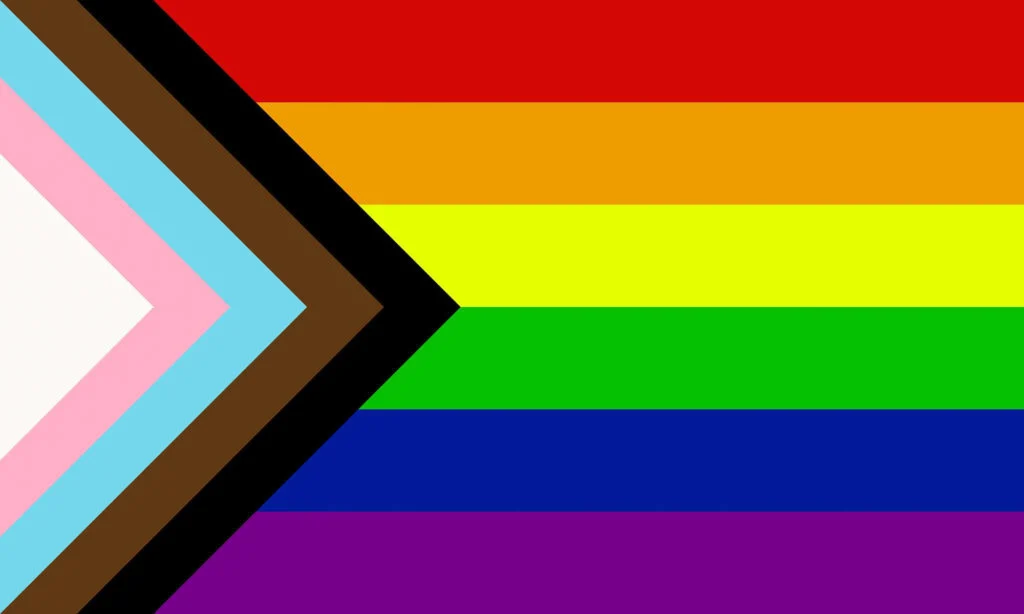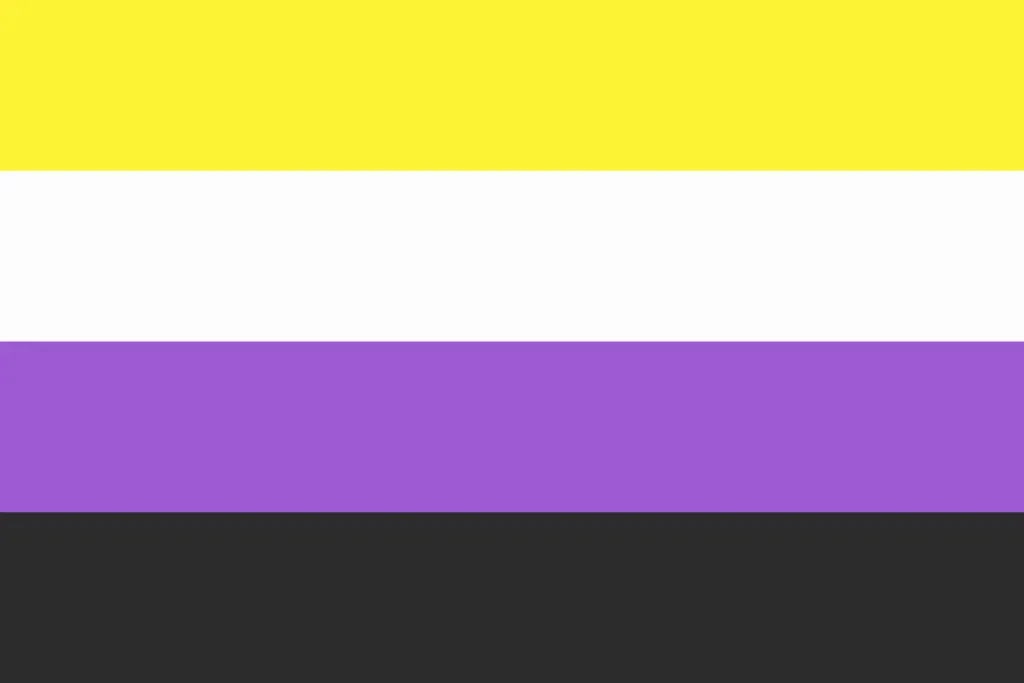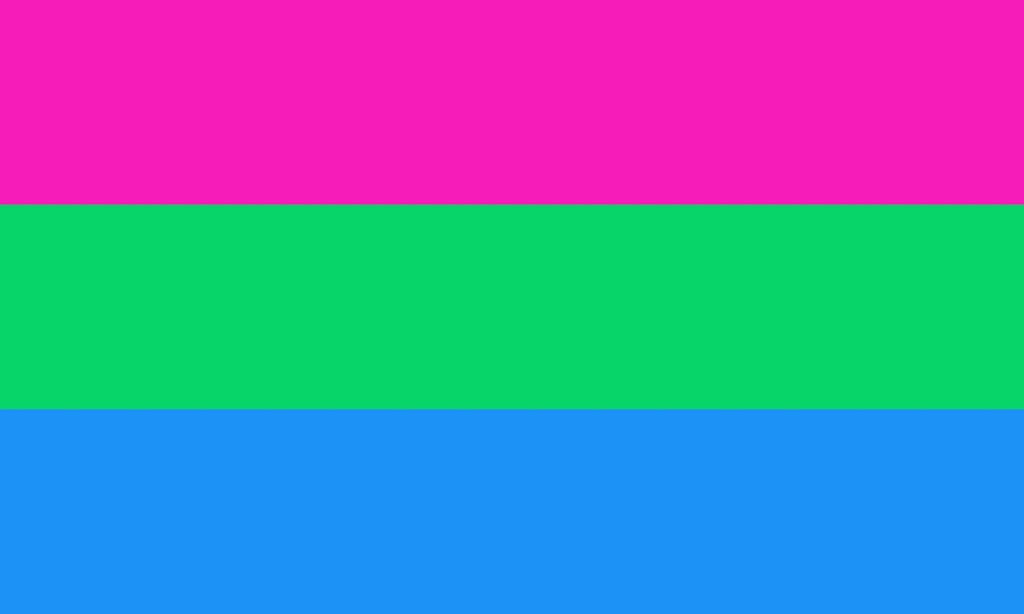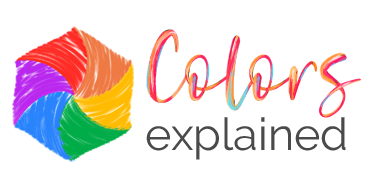Here’re all the Pride Flags’ color meaning and significance.
Colorful and diverse, all Pride flags represent the LGBTQIA community and help them feel seen and heard.
Beyond that, the LGBTQ+ community has adopted specific symbols and flags for not only self-identification but also to share values, show unity, allegiance, and pride.
Today’s article is about all the Pride Flags color meaning and significance. Yes, all of them. Although the most recognized international LGBT flag is the rainbow flag, there are many other colorful ones, as we will talk about here.
All Pride flags color meaning
Although we tried to feature all LGBT flags, it might be that we’ve missed any as new flags are designed. If that’s the case, please let us know so we can include it in this article. Thanks! Here’re all pride flags with respective meanings.
1. Original Pride Flag

As a symbol of pride, the original flag was created in 1977 by Gilbert Baker under the request of Harvey Milk.
With respect to the rainbow flag meaning, Milk wanted a symbol for the growing LGBTQ community in San Francisco.
Inspired by the striped American flag, he then used the rainbow to color it as the infinite spectrum of colors represents the infinite diversity in this beautiful community.
Here are the Pride Flag color meanings:
- Pink stripe: sex
- Red stripe: life
- Orange stripe: healing
- Yellow stripe: sunlight
- Green stripe: nature
- Turquoise stripe: magic and art
- Indigo stripe: serenity
- Purple stripe: spirit
What I liked about the symbolism of the rainbow is that it fits us. It’s all the colors. It represents all genders. It represents all the races. It’s the rainbow of humanity.
Gilbert Baker
2. 1978-1999 Pride Flag

The original Pride Flag had eight colors, as mentioned above. Still, it was simplified one year later to accommodate industry standards in order to keep up with the overwhelming demand for this new symbol of hope and liberation.
Yet, the Pride Flag meaning remained the same.
3. LGBT/Gay Pride Flag

Also known as the LGBT Pride Flag, Gay Pride Flag, or Rainbow Pride Flag, this prominent LGBT symbol is often used by the LGBTQ+ communities and allies.
It is also used to communicate LGBT-friendliness in cafés, bars, and various establishments.
Beyond that, many city halls and landmarks worldwide raise the flag or are illuminated in its colors during June, the Pride Month. Monuments like Christ the Redeemer statue and the White House are illuminated during this month.
The Pride Flag color meanings remain the same as the original one; however, two stripes were removed (turquoise and pink colors) for simplifying purposes.
4. Lesbian Pride Flag

The original lesbian Pride Flag had a double-headed white ax superimposed on the inverted black triangle set against a violet background.
However, the most used flag nowadays is derived from the lipstick lesbian flag used to represent lesbian subculture who exhibit a more significant amount of feminine gender attributes, such as wearing makeup (thus, lipstick).
Emily Gwen introduced it in 2018 on Tumblr, and it has been a hit ever since.
Lesbian Pride Flag color meanings:
- Dark orange: gender non-conformity
- Light orange: community
- White: unique relationships to womanhood
- Pink: serenity and peace
- Dark pink: feminity
The flag was created to be inclusive and supportive of the lesbian community. This includes trans and nonbinary lesbians, including lesbians who use pronouns other than she/her. Please make sure that if you use the lesbian flag, you are not using it in a way that goes against the core values around which it was created.
Emily Gwen
5. Bisexual Pride Flag

Created in 1998 by Michael Page, the bisexual flag represents the increased visibility of bisexual people in the LGBT community and society.
The color scheme is borrowed from the two overlapping triangles used as a symbol of bisexual community and pride.
The inverted pink triangle, a symbol reclaimed from WWII, was used to identify gay men in concentration camps. Nowadays, the downward-pointing pink triangle is a symbol of self-identity, freedom, and pride.
Bisexual Pride Flag color meanings:
- Magenta stripe: attraction to the same gender only
- Royal blue stripe: attraction to the opposite gender only
- Lavender stripe: the resultant overlap color represents attraction to both genders
The intent and purpose of the flag are to maximize bisexual pride and visibility.
Michael Page
6. Transgender Pride Flag

Designed by trans woman Monica Helms in 2000, this flag was first flown at a pride parade in Phoenix, Arizona.
She says, “the pattern is such that no matter which way you fly it, it will always be correct. This [the transgender flag] symbolizes us trying to find correctness in our own lives.”
Transgender Pride Flag color meanings:
- Light blue: boys
- Pink: girls
- White: people who are transitioning, neutral gender, agender, and intersex
7. Genderqueer Pride Flag

Genderqueer individuals don’t conform to conventional gender distinctions of our society (female and male) but identify with neither, both, or a combination of these genders.
Psychology Today explains, “this may be in terms of their thoughts, feelings, behaviors, and, most importantly, their gender identity.”
As for the genderqueer flag, it was designed by Marilyn Roxie in 2011. Genderqueer Pride Flag color meanings:
- Lavender: a combination of masculinity and femininity, including various degrees of androgyny
- White: agender identities
- Green: non-binary people
8. Intersex Pride Flag

Created in 2013, the intersex flag is a simple but powerful one. That’s because it represents intersex people, whose bodies don’t align with the gender binary of female and male.
The flag was designed by Morgan Carpenter, who aimed to create a symbol “that is not derivative, but is yet firmly grounded in meaning.”
It uses “hermaphrodite” colors, yellow and purple, meaning non-derivative of gendered pink and blue. The circle symbolizes wholeness.
- Yellow: gender neutral
- Purple: gender neutral
9. Agender Pride Flag

Unlike genderqueer people that bend the rules of gender, agender people reject a gender completely.
In 2014, Salem Fontana designed the agender Pride Flag, which has seven horizontal stripes.
Agender Pride Flag color meanings:
- Black and white: absence of gender
- Gray: semi-genderlessness
- Green: non-binary gender
Read next: 9 Pretty Gender-Neutral Colors
10. Philly Pride Flag

First raised in 2017, the Philadelphia Pride Flag is the current LGBT flag with the addition of two more stripes to highlight black and brown LGBTQIA members within the community.
According to Pride, “noting that queer people of color are often not fully included in the LGBT community, the city of Philadelphia added two colors — black and brown stripes— to the Pride Flag in their honor.”
11. Progress Pride Flag

In response to Philly Pride Flag, Daniel Quasar recreated the Pride Flag to achieve a better design and give more meaning to it. As such, he added five half-sized stripes in the shape of an arrow to the hoist.
Quasar said, “the arrow points to the right to show forward movement while being along the left edge shows that progress still needs to be made.”
As for the Progress Pride Flag color meanings, the six stripes on the background have the same meaning as the traditional colors of the LGBT Flag: life, healing, sunlight, nature, magic and art, and serenity.
On the other hand, the white, pink, and blue stripes represent the trans identity: people in transition, girls, and boys.
The two last stripes, brown and black, represent the people of color and AIDs victims, respectively.
We need to always keep progress moving forward in all aspects of our community.
Daniel Quasar
12. Queer People of Color Pride Flag

Although this flag was used before, 2020 was the year when the queer people of color (QPOC) Pride Flag raised considerably in popularity as a sign of solidarity with Black Lives Matter demonstrations worldwide.
This colorful flag represents not only QPOC but also how the black community and the queer community are often woven together.
To represent that, the raised fist with six stripes in shades of brown, from light to dark, was added on top of a black circle onto the traditional and most current LGBT Pride Flag.
In the past, the raised fist was used as a symbol of support and solidarity as well as an expression of resistance, strength, and unity.
13. Aromantic Pride Flag

Aromantic people have little to no romantic attraction to others, primarily carnal. Beyond that, the aromantic flag consists of five horizontal stripes representing diverse identities.
Aromantic Pride Flag color meanings:
- Green stripe: aromanticism
- Light green stripe: aromanticism spectrum
- White stripe: aesthetic attraction
- Gray stripe: gray-aromanticism
- Black stripe: demiromantic
14. Asexual Pride Flag

Asexuality is the lack of sexual attraction, wrote the Asexual Visibility and Education Network. “They are not drawn to people sexually and do not desire to act upon attraction to others in a sexual way.”
In 2010, the asexual flag was created to create awareness and represent this community.
Asexual Pride Flag color meanings:
- Black stripe: asexuality
- Gray stripe: demisexual and gray-ace
- White stripe: allosexual
- Purple stripe: community
It has been widely accepted by the asexual community. But we never dreamed that one day we would see it flown in Prides in England, America, Israel, India, Australia, and all around the world.
Neth Dugan
15. Demisexual Pride Flag

Demisexuals don’t experience sexual attraction until they have formed a strong emotional connection with a possible partner. However, the definition of “emotional bond” may vary from person to person.
Demisexual Pride Flag color meanings:
- Black: asexuality as a whole
- Gray: gray-asexuality and demisexuality
- White: sexuality
- Purple: community
16. Non-Binary Pride Flag

Created in 2014, the non-binary flag represents the different identities of those who don’t feel connected to the gender binary – who are neither male nor female.
Non-Binary Pride Flag color meanings:
- Yellow stripe: genders outside of the gender binary
- White stripe: nonbinary people
- Purple stripe: people that are a mixture of male and female genders
- Black stripe: agender individuals
17. Pansexual Pride Flag

Pansexuals are those attracted to all genders. Created in 2010, the pansexual flag is a tricolor symbol.
Pansexual Pride Flag color meanings:
- Hot pink: attraction to females
- Yellow: attraction to everyone else than females and males
- Blue: attraction to males
18. Genderfluid Pride Flag

Also known as genderflexible, genderfluid people are flexible about their gender identity instead of the traditional conformity of choosing a single definition.
They may fluctuate between different gender expressions over their lifetime or express multiple aspects of various gender markers simultaneously.
Embracing the fluctuations and the flexibility of gender in genderfluid people, the flag created by JJ Poole in 2012 features colors associated with femininity, masculinity, and everything in between.
Genderfluid Pride Flag color meanings:
- Pink stripe: femininity
- White stripe: all genders, including third genders
- Purple stripe: both masculinity and femininity
- Black stripe: lack of gender
- Blue stripe: masculinity
19. Polysexual Pride Flag

Polysexual people are attracted to many, but not all, genders. A middle ground between bisexuality and pansexuality, polysexuality is centered more around attractions to femininity and masculinity rather than gender itself.
Polysexual Pride Flag color meanings:
- Pink: attraction to females
- Green: attraction to those who don’t conform to either gender
- Blue: attraction to males
20. Polyamory Pride Flag

Featuring the Greek lowercase letter “pi” (π) on their flag, which also is the first letter of the word polyamory, this flag celebrates the infinite selection of partners, meaning having open relationships.
Polyamory Pride Flag color meanings:
- Blue: honesty and openness
- Red: love and passion
- Black: solidarity
- Golden: the value of relationship, emotional attachment, either friendly or romantic, as opposed to merely physical relationships
21. Straight Ally Pride Flag

The rainbow stripes of the LGBT Flag in the shape of the letter “a” on top of a black and white striped background. Simple but powerful. This flag represents the allies who support the LGBTQ+ community.
Not only that but this flag makes everyone feel included, especially at Pride marches, when allies celebrate other people’s sexualities.
- Black and white: straight and cisgender people
- Colored stripes: LGBTQ+ community
22. Leather, Latex, & BDSM Flag

Whether the kink community should exist within or outside the LGBTQ+ community is a heated debate. Still, the community certainly has many of its own flags.
It is a gay subculture heavily associated with kink and the BDSM community, with leather bars typically adhered by ‘bears’ (heavily-haired men).
It is essential to note that this flag is not exclusively for gay people but rather for the leather and BDSM community.
Designed in 1989 by Tony DeBlase, the flag is now commonly used in Pride parades by the leather subculture, as well as partially being embraced by the BDSM community.
According to DeBlase, “the flag is composed of nine horizontal stripes of equal width. From the top and from the bottom, the stripes alternate [between] black and royal blue. The central stripe is white. In the upper left quadrant of the flag is a large red heart. I will leave it to the viewer to interpret the colors and symbols.”
23. Lipstick Lesbian Flag

As mentioned before, lipstick lesbian is slang for a lesbian who shows many feminine gender attributes, such as wearing dresses, skirts, makeup (thus, lipstick), and having other characteristics associated with feminine women.
24. Bear Pride Flag

As a gay subculture, a bear is a man who is hairy and/or has facial hair, often with a ‘cuddly’ body. Like leather, the bear subculture has its own flag that is regularly seen at Pride events.
Its colors aren’t used to represent skin color but the fur of a bear.
Wrapping up on the LGBT Flags meanings
We’ve seen the LGBT Flags are colorful and full of essential meanings. Their diversity in shades shows the diversity within the gay community and the world.
Not only that but the Pride Flags color meanings are also rooted in the meanings of the colors and their symbology for western standards.
Did we miss any flag? Let us know in the comments!

Col
Monday 17th of July 2023
Thanks Bruna, Well done bringing this all together. Just one minor typo to mention, you misspelled Aromantic as Aromatic in the description, which does tend to change the meaning somewhat. I'll be back to explore the remainder of your site soon. Best regards.
Bruna
Tuesday 1st of August 2023
Thanks for letting me know, Colin! Updated the article. :)
Lee
Thursday 4th of May 2023
this was really helpful thank you. i love and want to learn more about LGBTQ+ and this helped so much
Luis
Monday 6th of February 2023
Thank you for the easy to follow explanations. This will help me to keep showing support for the community in honor of my uncle & everything she represented (Love & acceptance)
Tiger
Sunday 29th of May 2022
As a person who's learning about the LGBTQ+ community, this was super helpful!!
Laura
Tuesday 24th of May 2022
I love this so much. Thank you for the informative article. I especially love the lipstick lesbian flag.